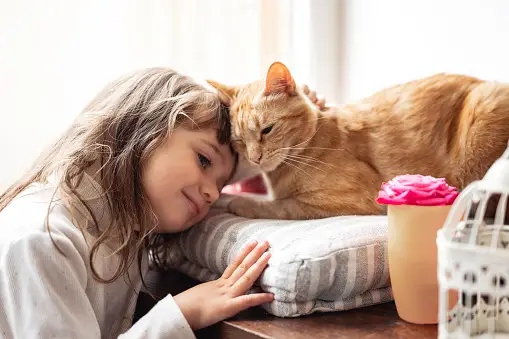Pets, especially dogs and cats, can reduce stress, anxiety, and depression, ease loneliness, encourage exercise and playfulness. Caring for an animal can help children grow up more secure and active. However, getting a pet is a big decision in any family especially when there are children in the household. Children can put added pressure on parents to get a pet when the timing may not be ideal and can potentially rapidly check out of helping care for the pet they so desperately wanted. So how do we ensure getting a pet, big or small, works out to the benefit of the whole family and the children remain engaged?

When choosing a pet, make sure the species and temperament of the animal matches your family and lifestyle. Do as much research as possible as to what might work best for your family. If you do not have space for a larger pet, there are plenty of cuddly palm sized pets that would be good options. See blog article ‘Small furry pets’. Adoption or rescue is always a preferable option to buying an expensive pure-bred cat or dog and sends a very positive message to children. In addition, pets should never be given as presents to children, as it can give them the idea that animals are like toys.
The degree of responsibility a child can be given for care of the pet obviously depends on the type of pet and the age of the child; caring for a pet is one of the best ways of instilling a sense of responsibility in children. It is the parents’ responsibility to make sure that children are aware of the work involved in their care. Remind the child that it is their job to help care for the animal- if they fully understand that the pet is also their special responsibility, it will motivate them to put in the time and energy to keep it. Ultimately, a healthy, happy pet provides a sense of accomplishment like little else.
Children can begin to learn very early that pets are living creatures that need love and that is it never ok to pull tails, pick them up with parental supervision of go near them when they are eating. From 3 years, they can help parents with getting supplies or answering simple questions like, “Where do we keep the dog’s food?” even though they are too young to feed the pet themselves. Preschool children are still too young to feed or walk a pet themselves, but they can assist parents or older siblings. They can also hold onto the leash while parents walk the dog- sometimes there is an extra loop just for this.
Kids aged between 6-8 can teach pets can play fetch or teach simple tricks and commands- great ways for your child to care for the pet’s need for stimulation and attention. Children this age can also learn to brush their cat or dog correctly with supervision. Small dogs can be walked on a leash in an enclosed yard with an adult’s supervision to give them the experience in a safe environment. Bigger dogs still need to be walked by adults, but the children can help.
At age 9, most children can walk their dog for short distances under the watchful eye of an adult. By 10 or 11, they can likely walk their dog solo and pick up the poop; teaching them proper hygiene around this time is crucial. Children this age can also feed and bathe pets alone once taught.
Pet death
Some parents are put off having pets as they are afraid that the inevitable death of a pet is too much for a child to handle, or they do not want to deal with their child’s sadness. When preparing your child for a new pet, it is important that they understand that pets do not live as long as people do. Try to give them an understanding of how long their new friend will be around, although this is obviously difficult for younger children to grasp. Never purchase a pet without making a commitment to the animal’s full lifespan. A goldfish is meant to last up to 10 years, not six months!
The death of a pet is often a child’s first experience with death. However, this sad reality of pet keeping opens up opportunities in regard to dealing with and processing grief.
Children with social challenges will benefit from the companionship of a pet if they are encouraged to view the animal as their friend. Caring for a pet also fosters social interaction with other pet owners and communities. Those with mental health struggles often feel validated knowing that their pet will never judge them and is always on their side.
Summary
Allowing a child to have a pet- any pet- is not a decision to be taken lightly. However, pet care brings its own rewards for all children. In addition, the mental health benefits of pet keeping apply to children just as much as adults
The sense of responsibility and accomplishment your child will get from caring for their own pet is one they cannot get anywhere else. Caring for a pet allows your child to have a friend that will love them unconditionally and encourages the development of empathy and understanding.






